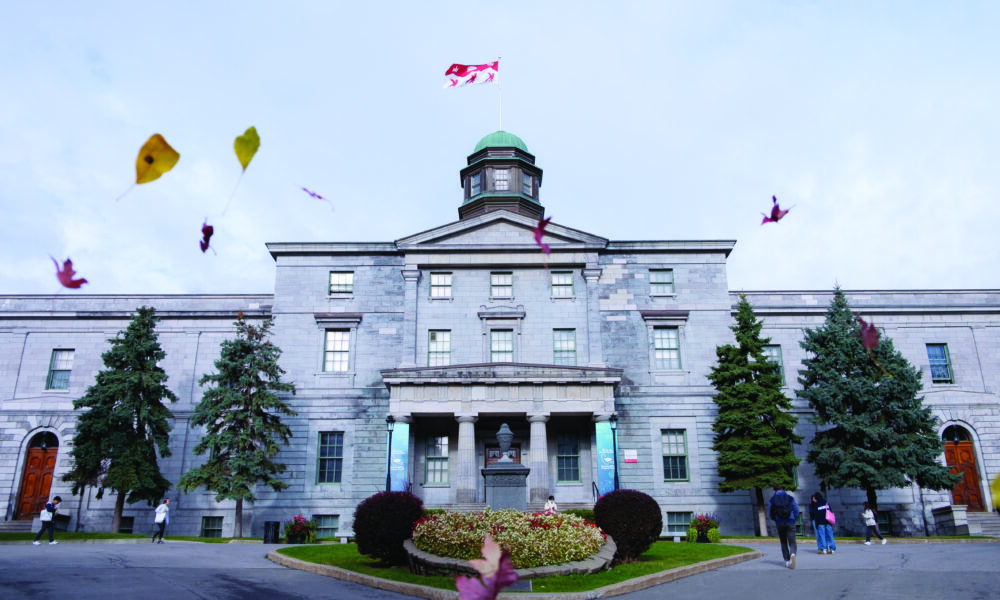On Oct. 5, McGill’s Bieler School of Environment hosted their annual Environment Public Lecture. For this occasion, Moyse Hall Theatre was speckled with professors and students curious to hear how Gernot Wagner, a climate economist and lecturer at Columbia Business School, would argue that the solution to the climate crisis lies in the business world.
In his lecture, Climate Risks, Uncertainties, and Opportunities, Wagner argued that investing in sustainable climate technologies to reach global emission targets is the right thing to do, not only morally, but economically.
He stressed that the social cost of carbon (SCC)—an estimate, in dollars, of the economic damages that would result from emitting an additional ton of CO2 into the atmosphere—is an effective tool to guide policy creation, as it translates the consequences of climate change into economic language, which are more easily understood by policymakers than future concerns about preserving the environment.
“$200 [USD] is the bare minimum of the full social cost per ton of CO2 emitted into the atmosphere today,” Wagner explained in his lecture.
However, this estimate only considers what we already know. What we do not know—the risks and uncertainties—may worsen the climate crisis, and push the value of the SCC higher. In other words, as the crisis worsens, the financial toll of each new ton of CO2 may change dramatically.
Since these unknowns are so critical to the future of climate change, Wagner considered environmental protection a global risk-management problem. He highlighted the importance of higher cost estimates, since inevitable tipping points, such as the Gulf Stream collapse, will likely double the social cost of carbon.
But using only SCC estimates leads to a seemingly simple solution: If we were to all pay $200-400 per ton of CO2 by policy, we could solve the climate crisis.
“News flash, we don’t live in that world,” Wagner said. “There is no one silver-bullet technical solution, or one silver-bullet policy solution either.”
Rather than treating carbon pricing as a fix-all solution, to see real change, governments must decide to frontload their funding, as opposed to spending a small portion each year. Although legislators may have trouble justifying this hefty initial sum politically, pure economic reasoning can justify these investments even when we leave out the costs of climate-related disasters, health impacts, and loss of ecosystem services.
Wagner explained that, on a global scale, these measures are feasible. If we redirect investments from high-emissions assets, such as fossil fuel extraction, to clean energy, and consider how much is currently spent on clean technologies and infrastructure, then the costs of reaching global emission targets start to shrink.
“The difference between current policies and net-zero by 2050 is only $25 trillion in total spending over the next 30 years, or less than an extra $1 trillion per year on average,” Wagner said.
This extra annual cost is less than half the total military spending worldwide in 2022, which amounted to 2.2 trillion USD.
He stated that ultimately, the right policy would not be to simply price the “optimal fee.” The solution is a mix of different measures: Subsidies and regulations, providing alternative sources of energy, redirecting funds away from high-emissions technologies, and investing in efficient ones.
For context, Wagner used the example of a U.S. policy set in 2007 that enacted the switch from incandescent to LED lightbulbs. Predictions about initial investments paying for themselves due to dramatically higher energy efficiency drove this policy. Soon after the U.S. implemented this policy, many countries followed suit.
Wagner ended by emphasizing that the solution to climate change will happen with the right mix of different approaches. A large part of the solution involves applying our scientific knowledge to direct policy and using all of our current technologies to achieve this.
“It’s technology, it’s behavior, and it’s policy,” said Wagner. “The name of the game is to actually get on with it.”








